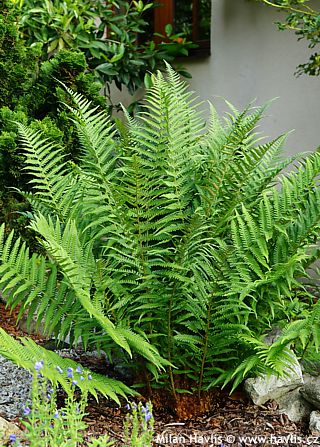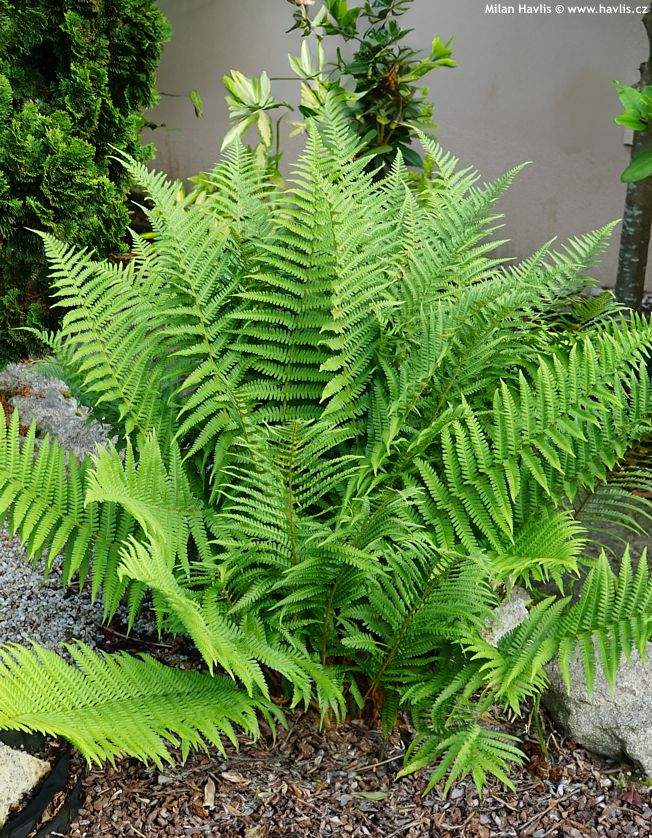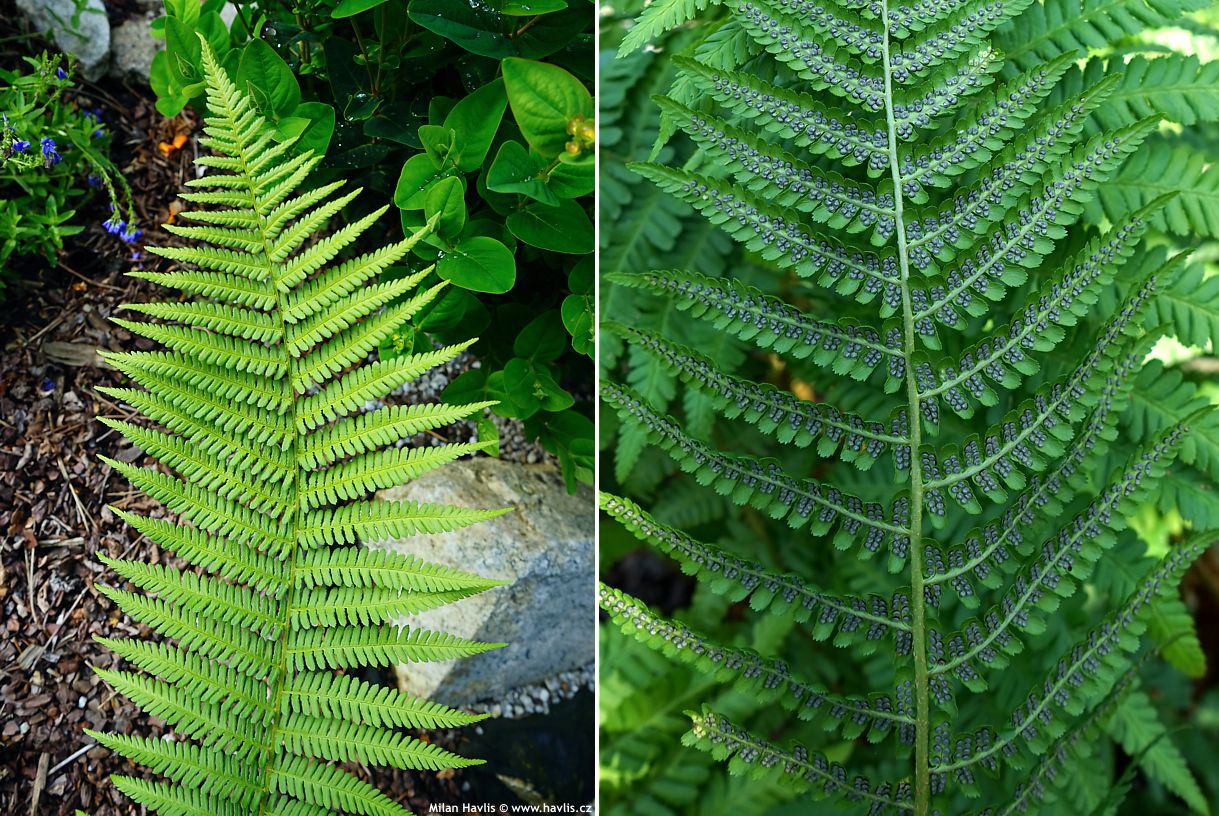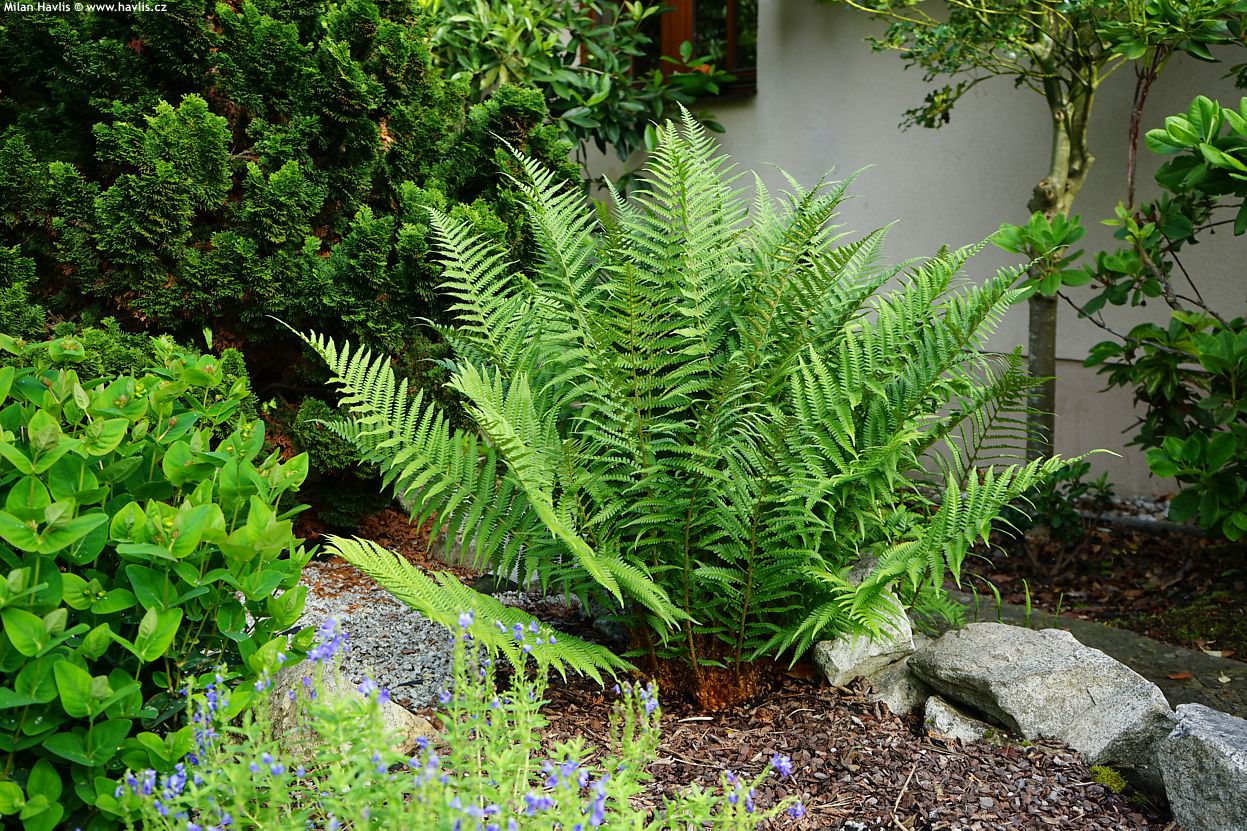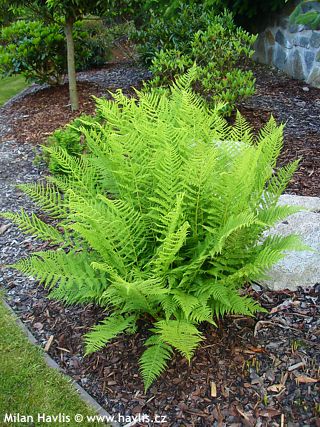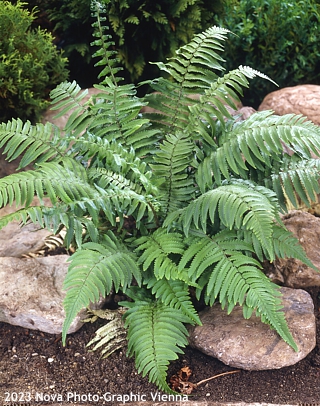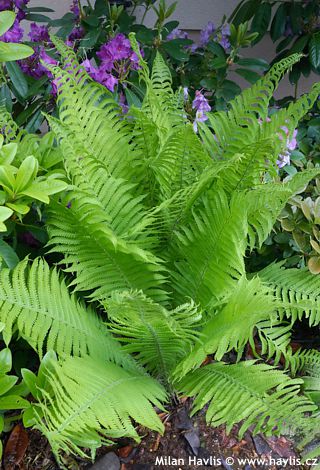Dryopteris filix-mas male fern
size/type
mid-sized perennial,mid-sized perennial
usual height
0,8-1,3m
usual width
0,8-1m
leaves
deciduous broadleaf
colour of leaves
location
full sun to shade
soil type
any (acidic to alkaline)
soil moisture requirements
evenly moist (dislikes drought)
USDA zone (lowest)
3 (down to -40°C)
winter protection
for zone 5+6

for zone 7

categorized
Description of the plant:
The male fern is our native species, found throughout Europe and into the subarctic parts of the Northern Hemisphere. In smaller quantities it is also present in North America and Northern Asia. Available information about the taxon is somewhat diverse which makes no sense as the plant is not variable. Here are the facts based on our own experience.The male fern is a tall, shuttlecock type of deciduous fern with long fronds of leaves and massive clumps, due to which it was named male in contrast to also tall but conspicuously finer-looking female fern (athyrium filix-femina). The leaves are bright green, upright, sturdy and reach 100 to 130 cm in ideal conditions. They are bipinnate and the individual leaflets are oval with small notches on the lobes. Dark grey spores decorate the reverse of the leaves. The plant looks very impressive and is suitable not only for semi-shaded perennial beds, but also to soften borders with small to mid-sized shrubs, especially among those with multistemmed framefork.
In both literature and online you can often find the information that male fern is evergreen to semi-deciduous. Perhaps in warmer parts of Europe but it does not normally grow there. In C.E. conditions, it remains beautiful long into the winter, and only severe frost or heavy snow will damage its leaves. So make sure to remove them all in spring.
This is a reliable species which, in the wild, is most often found in filtered sunlight under the canopies of tall trees. However, it will also thrive in the garden in full sun if you water it occasionally – it can suffer from sunscorch during dry spells. It is reproduced by viable seeds which often establish in most unexpected places such as crevices between stones and in pavings where moisture is retained. As soon as it settles in one place, it enlarges its clump which can be divided from time to time, since each of them has its own root. It is not demanding as to soil type or pH. It is very hardy down to approx. -40 °C (USDA zone 3), perhaps even more.
Last update: 10-06-2024
QUICK PRICE OVERVIEW
CURRENTLY SOLD OUT
WANT TO TRY A SIMILAR PLANT?












